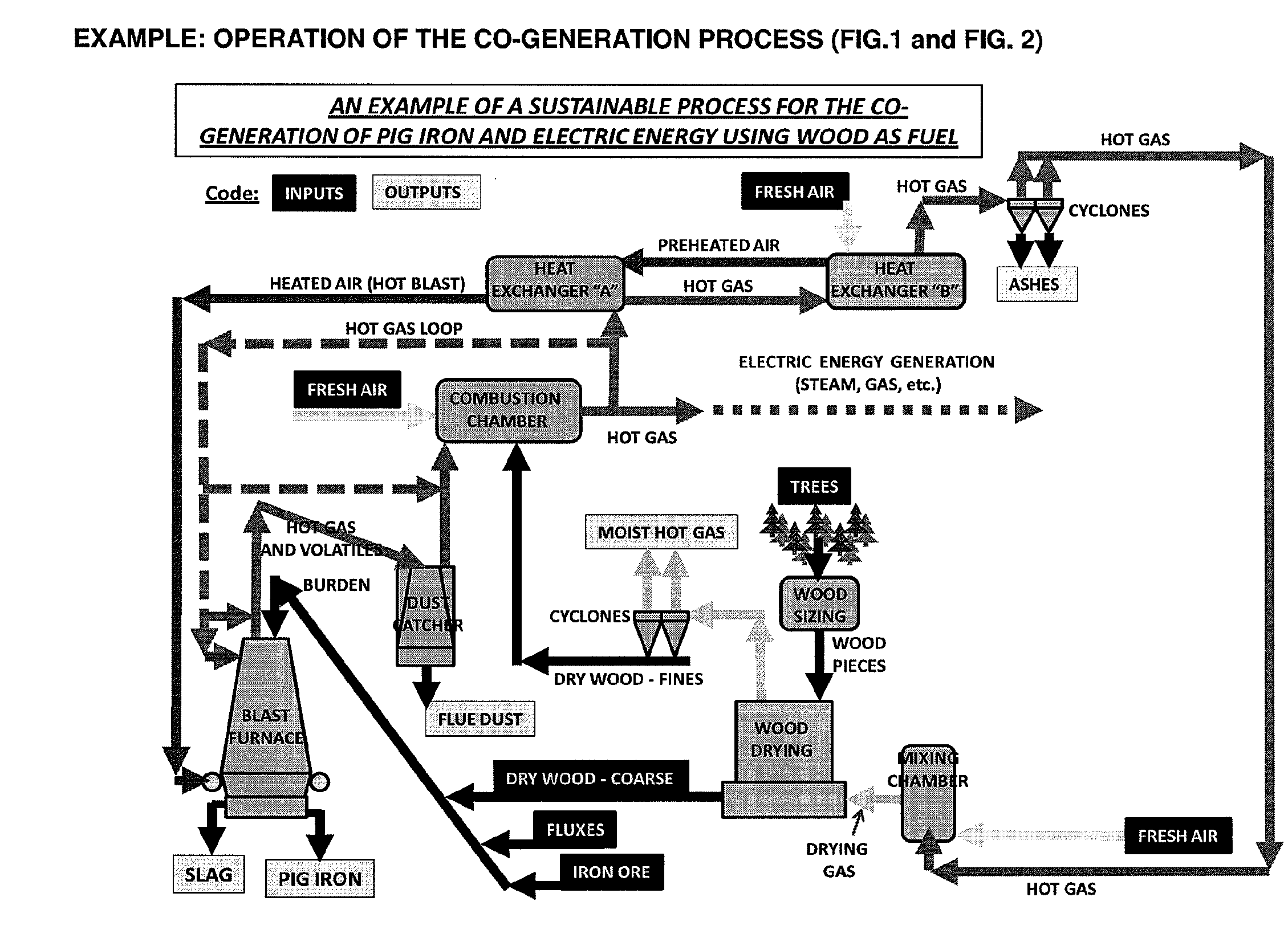Sustainable process for the co-generation of pig iron and electric energy using wood as fuel
a cogeneration process and sustainable technology, applied in the field of sustainable process for cogeneration of pig iron and electric energy using wood as fuel, can solve the problems of not establishing such biomass materials, not considering substantial energy co-production, and wasting resources, and achieves the effects of reducing pollution, reducing waste, and reducing the number of wastes
- Summary
- Abstract
- Description
- Claims
- Application Information
AI Technical Summary
Benefits of technology
Problems solved by technology
Method used
Image
Examples
Embodiment Construction
The Present Invention
An Integrated Process
[0076]The present invention relates to the design of interactions among the above mentioned four industrial processes to integrate them into one system for the co-generation of pig iron and electric energy in the most effective and efficient way (FIGS. 1 and 2). The objective is to optimize the new system in order to solve the above mentioned problems that confront the steel industry, instead of optimizing each of the four production subsystems independently of each other. By optimizing sub-systems in an independent way, we will continue to drag into the future the same problems that we face today because these problems are neither fragmented nor isolated. They are systemic, interdependent and interconnected and therefore, they must be solved as a system.
[0077]We propose the elimination of the traditional independent charcoal production process and to charge the wood (better high energy density hardwoods) directly into the blast furnace, aft...
PUM
| Property | Measurement | Unit |
|---|---|---|
| Electric energy | aaaaa | aaaaa |
| Efficiency | aaaaa | aaaaa |
| Content | aaaaa | aaaaa |
Abstract
Description
Claims
Application Information
 Login to View More
Login to View More - R&D
- Intellectual Property
- Life Sciences
- Materials
- Tech Scout
- Unparalleled Data Quality
- Higher Quality Content
- 60% Fewer Hallucinations
Browse by: Latest US Patents, China's latest patents, Technical Efficacy Thesaurus, Application Domain, Technology Topic, Popular Technical Reports.
© 2025 PatSnap. All rights reserved.Legal|Privacy policy|Modern Slavery Act Transparency Statement|Sitemap|About US| Contact US: help@patsnap.com



